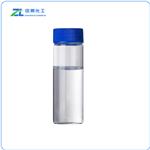Description
Pelargonic acid is a chemical substance that is found in almost all species of animals and plants. Because it contains nine carbon atoms, it is also called nonanoic acid.It is readily broken down in the environment.
Physical properties
Pelargonic Acid is a clear, oily liquid with an unpleasant, rancid odor. It is nearly insoluble in water, but very soluble in chloroform, ether, and hexane.Its refractive index is 1.4322. Its critical point is at 712 K ( 439℃ ) and 2.35 MPa.
Occurrence
Pelargonic acid, also known as nonanoic acid, occurs naturally in many animals and plants, including geranium (Pelargonium spp.).Commercially, however, pelargonic acid is manufactured using a synthetic process; to produce the active ingredient, various sources of fats and oils are reacted with ozone, and are then separated by fractional distillation.
Uses
Pelargonic Acid is commonly used in conjunction with glyphosate which is a kind of non-selective herbicide in order to obtain a quick burn-down effect in the control of weeds in turfgrass.It is also a potent antifungal agent which can inhibit spore germination and mycelial growth of pathogenic fungi.
Moreover, it can also be used in the preparation of plasticizers and lacquers. It can also be potentially used for the treatment of seizures.
Pharmacology
Pelargonic acid may be more potent than valproic acid in treating seizures.Moreover, in contrast to valproic acid, pelargonic acid exhibited no effect on HDAC inhibition, suggesting that it is unlikely to show HDAC inhibition-related teratogenicity.






